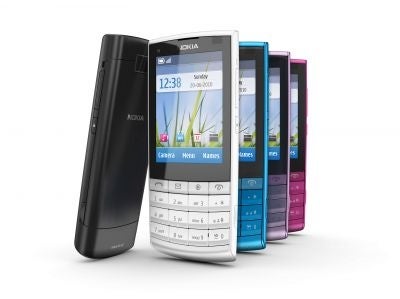Your support helps us to tell the story
From reproductive rights to climate change to Big Tech, The Independent is on the ground when the story is developing. Whether it's investigating the financials of Elon Musk's pro-Trump PAC or producing our latest documentary, 'The A Word', which shines a light on the American women fighting for reproductive rights, we know how important it is to parse out the facts from the messaging.
At such a critical moment in US history, we need reporters on the ground. Your donation allows us to keep sending journalists to speak to both sides of the story.
The Independent is trusted by Americans across the entire political spectrum. And unlike many other quality news outlets, we choose not to lock Americans out of our reporting and analysis with paywalls. We believe quality journalism should be available to everyone, paid for by those who can afford it.
Your support makes all the difference.Consumer electronics companies are busy racing forward, embracing new technology and trying to develop gadgets with the latest and greatest features, but recently a couple of mobile phone makers have changed their tactics, introducing high-tech phones with, what many might consider, outdated features.
In a world where everyone is fighting to invent the next iPhone killer, companies such as Nokia and Research In Motion (RIM) have decided to "make the familiar new," opting to transform the older-styled 12-button keypad into a desirable smartphone feature.
On August 17 Nokia announced it would introduce its first "Touch and Type" device while hinting at a new category of phones that embrace both the future and the past.
Nokia's first Touch and Type device, the X3, bridges the gap between smartphone and feature phone, combining smartphone features such as a touchscreen, and 3G and WiFi connectivity with "the most used mobile interface on the planet."
The device gently eases users who feel comfortable using the traditional mobile phone keypad into the world of smartphones.
"Our research tells us consumers who have invested years in becoming fast one-handed, one-thumb texters want to maintain their speedy edge for SMS, chat and instant messaging - yet enjoy the benefits of touch as well," said Mary McDowell, Executive Vice President of Mobile Phones at Nokia.
It is a strategy that RIM - a mobile maker which has become synonymous with smartphones - also employed with their recently released Pearl 9100 3G handset.
Nokia's diminutive X3 phone comes with a 5 megapixel, 4x digital zoom camera for both video and stills, dedicated music and messaging keys, access to Nokia's Ovi Store, 3G and WiFi connectivity, email, social networking, FM radio, and Bluetooth2.1.
The X3 is priced at €125 and is due to go on sale in China, Ireland & UK, Russia, Australia & New Zealand, Singapore, Germany, Spain & Portugal, France, Mexico and Saudi & Yemen this quarter with additional markets due to follow shortly.

Join our commenting forum
Join thought-provoking conversations, follow other Independent readers and see their replies
0Comments